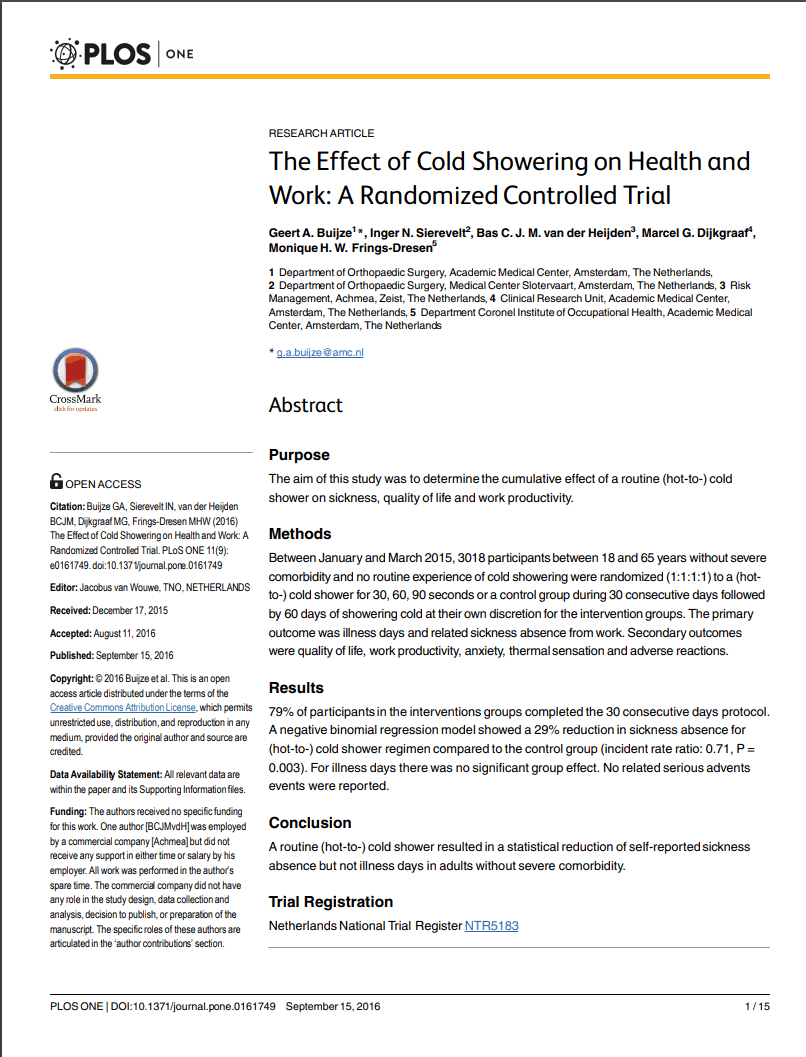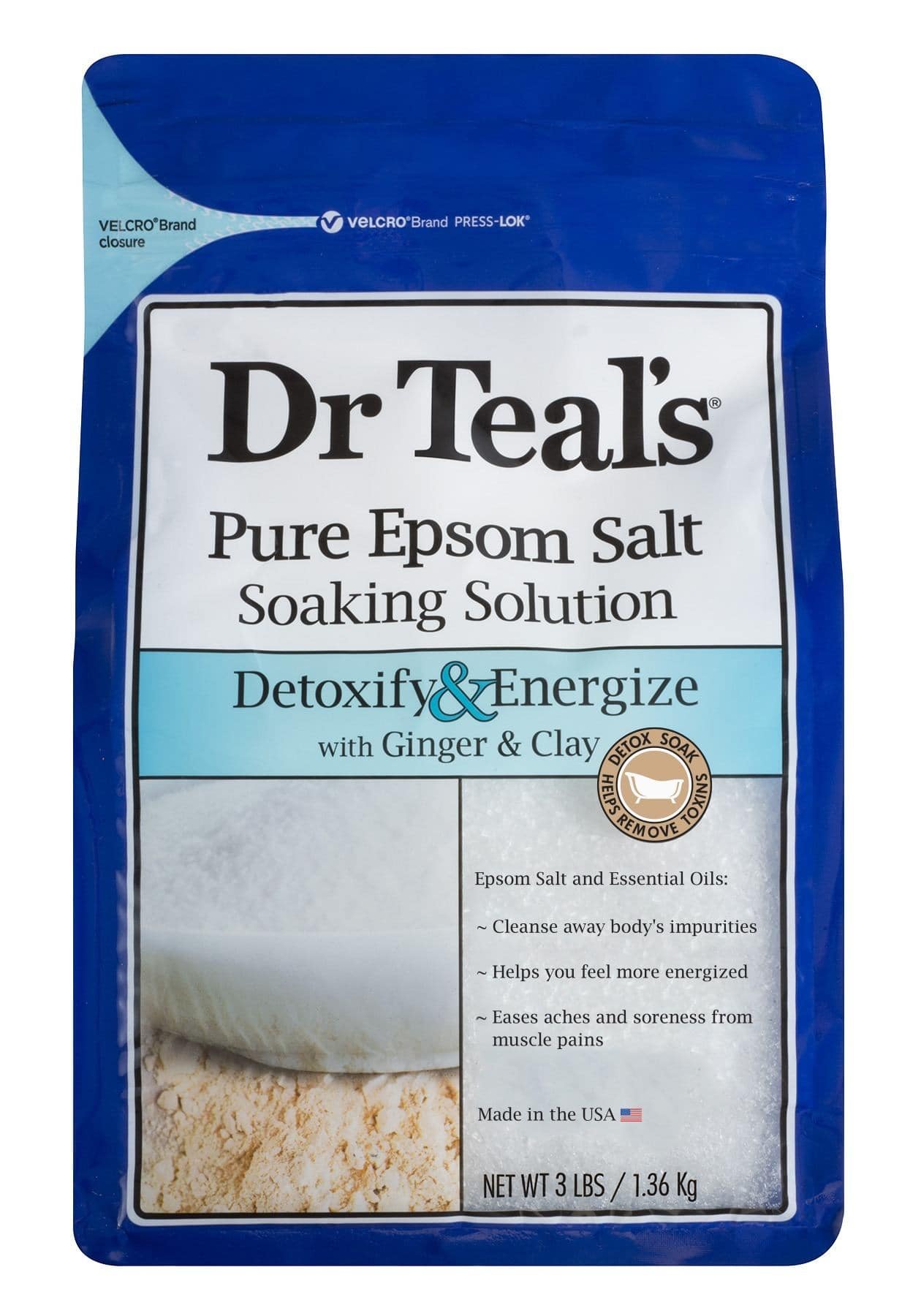Bath Therapy for Combat Arts Workout Recovery
The Japanese greatly value cleansing detox baths, and even today have public baths. The Japanese use sizzling hot water and scrub with a special type of cloth that exfoliates and detoxifies the body through its largest organ which is the skin. Dr. Hazel Parcells is a nutritionist pioneer who says 65% of body cleansing occurs through the skin. Baths for detox and recovery are necessary for the martial artist because of constant toxic overload.
Georges St-Pierre, also known as GSP, is the former Middleweight Champion of the Ultimate Fighting Championship. He is an ice bath devotee. “An ice bath after training is good, but a river is even better!”.
Hydrotherapy for Recovery
The use of water for recovery, drawing off aches and pains, soothing bruises, cuts and scrapes, washing away sweat and lactic acid buildup, then to be left feeling strong and renewed once again is undoubtedly as old as the first time humans found an icy stream or steaming hot, water-filled fissure.
Bath water should be hot as possible since it will pull toxins to the surface of the skin. Then, water cools down and pulls toxins out of the skin through osmosis, as Dr. Hazel Parcells explains in her book.
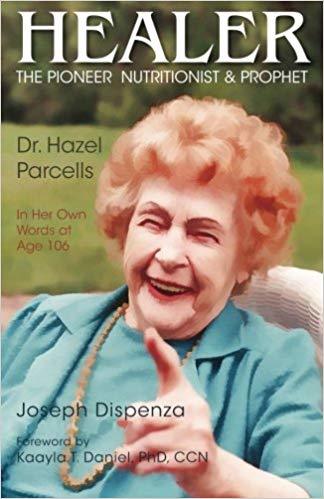
Ancient Warriors Used Hydrotherapy
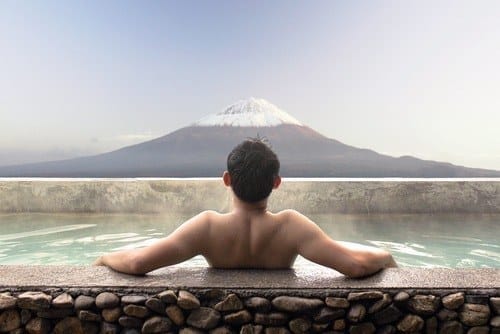
Evidence of ancient bathing practices from 2,400 BC were documented in archeological finds from palace bathing chambers of Knossos and Phaistos in Crete. In ancient times, martial artists and warriors used hot springs, icy river plunges, and snow dives to increase circulation, dull pain, and promote body pain resistance. Greeks used cold water first and then hot, while the Romans used hot water first and then cold.
Ancient Norse warriors are famous for alternating hot spring dips with deep snow rolling to toughen and strengthen their bodies. Even if scientific research didn’t have proof that it helps the body recover, and if age-old traditions didn’t preach its benefits (which they both do, by the way), the basic proof of the efficiency of water at renewing the human body is known by every martial artist who’s ever gingerly lowered a beaten, dully aching body into a bath or hot spring. It helps.
There is, in fact, a lot of scientific proof that it does help, along with traditional wisdom, on when to use a hot soak, cold dip, and what extras to put in for improving recovery.
Faster Recovery
Modern martial artists, like warriors of ancient times, need and rely upon a powerful, fast recovery from training, sparring, and fighting events. There is a lot of advice and information out there about best ways to train, layer on muscle, increase endurance, speed, and power. The key to achieving amazing martial arts conditioning, though, lies in recovery.
Every fighter wants to gain muscle mass, power and strength in the fastest way possible. Push that killer body to the limit, most days of the week, major intense workouts. Good, right? Sure, if there’s a great recovery plan. That’s why all martial artists, whether capoeira, ninjutsu, savate, BBJ, muay thai, tanglang, aikido, judo, and bagua, or karate, kung fu, krav maga, taekwondo, sanshou, kenjutsu, or any other style gets training advice from their masters and teachers, while MMA and UFC warriors have tough trainers who aren’t just telling them to train harder—but when and how to recover better, quicker, faster, so all that intense training results in hardcore conditioning—not physical breakdown.
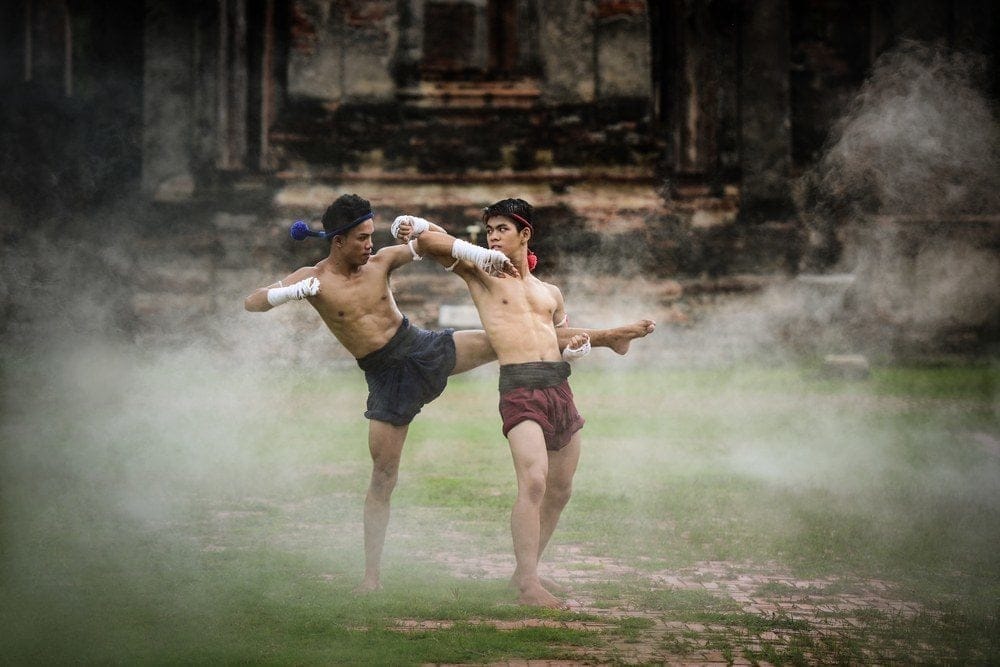
Great training depends on excellent training methods, intense physical application, mental determination, and natural talent. Great training also depends on restoring the muscles and body after powerful training sessions create micro-tears, joint pain, and bone stress. Improving training methods, or improving the body's ability to quickly recover from training, bouncing back with increased strength, endurance, and enhanced speed, gives the martial artist that finely honed edge.
Recovery Is Essential
There are many approaches to increasing recovery and physical restoration, while lowering time required. Properly utilizing these methods will make a huge difference between, for instance, working out like maniac, restoring the body, and with it the ability to maintain that intensity of workout every day, or suddenly feeling like every muscle is rebelling at the very idea of moving.
Correct recovery methods such as baths will minimize chance of injury, aches, pains, and stiffness, boost progress made between training sessions, while continuing to increase muscle and bone strength.
Baths To Improve Recovery
There has been a lot of research performed on how baths of every type affect training, recovery, strength and endurance immediately before and after bathing, and with delayed time response.
It would seem the final answer on baths would be clear by now. After all this intense research into baths, the different types, what they can and cannot do, how they may or may not assist training, how they impact the physical responses of the body, details should be reasonably certain at this point.
Benefits of baths for martial arts recovery are very clear for most types. Ice baths is the one type of training recovery method that continues to have mixed results. This does not mean that ice baths do not work.
It does mean, however, that this extreme method of recovery may be dependent upon personal hereditary details, body type, training type, and even personal preferences. For instance, just as some people can’t do hot tubs and require constant air conditioning, others do better in heat than cold, and will take 100 degree weather any day over zero degrees and snow. On a physical level there will be a reason for this. Pay attention to personal body mechanics and physical preferences then turn them to your advantage.
Test Your Body
The truth is that it’s convenient to have a box that every ‘body’ fits into, a single, definitive answer that will tell the training athlete exactly what they need, when, how much, and how often. The truth is more complicated than that. Think about it: if the answer was always the same, then don’t pay a trainer, just read one book or follow that single training plan.
Mix It Up For Top Results
The flip side to this is that in order to continue major gains in physical conditioning, training types and approaches, along with which recovery methods used and when, must be varied and mixed up to keep them from getting stale and maintain a sharp edge. The body will adapt to training methods and restorative methods, rendering them less effective if used the same way all the time. Research has shown that mixing it all up is the primo approach to creating and maintaining a combat-ready body.
Alternative Recovery Methods
Have several different recovery methods that are of varying intensities. Use the most effective methods only after extreme workouts or primo fighting sessions. This keeps them consistently useful for when they are most needed. Utilize less extreme and intense recovery methods after easier workouts or low level sparring. For instance, this means if using ice baths, try them after those killer workouts when just climbing into the tub feels grueling.
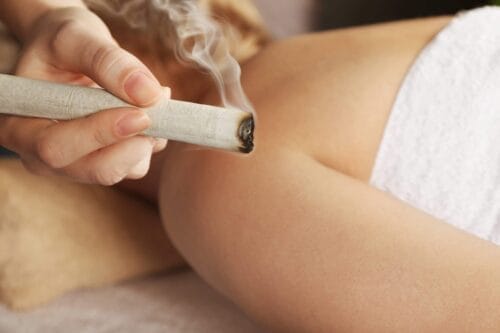
Bodies Are Different
Research results are clear on certain bath types, but provide mixed results on the effectiveness of ice baths. So, the definitive answer lies with you. It is ridiculous to assume that every ‘body’ will respond the same way every time to specific stimuli.
Each person has a different racial and gene pool makeup, finds comfort in different climates, and even basic needs may vary at different times. The ideal answer is to find out what works for you. Certain bath methods as systems of recovery are consistently positive.
Ice baths are one recovery approach that must be personally tried out and its efficiency individually decided.
A Look at the Research
Research results show positive physiological changes in the athlete’s body resulting from water therapy. Many research studies hail the benefits of heat baths, Epsom salts baths, salt and soda baths, contrast hot/cold baths and showers, essential oils baths, and detox baths.
The research results on cryotherapy or ice baths, however, provides very mixed results. However, many powerful professional athletes swear by its effectiveness in recovery after extreme training or fighting events.
Get a Cushion & Bath Ball
The bottom line for baths is comfort, ease, and relaxation. A bath cushion will support the head while allowing neck, shoulders, upper and lower back to let go, giving a better bath ‘bang for buck’ relaxation response. A small cushion can make a surprisingly large difference in bath comfort. Also, placing a small soft ball behind the back can be used for hitting trigger points in the back, shoulders and neck, pushing harder or softer depending on pressure level needed to release tension points during a hot bath.
Did You Know?
Soaking in a Bath Can Help You
Become a Better Combat Athlete
It is easier to do self-massage in the tub because of the body’s natural tendency to float in the water, allowing better control over the ball while still relaxing. Use this ball to push on trigger points and other sore areas for a self-massage while the heat melts away tightness.
The seven basic hydrotherapy recovery methods include:
Heat Therapy
Use heat therapy for reducing pain, soreness, inflammation, trigger points, tension and stress. Hot baths are the original deep hydrotherapy or water therapy treatment.
A hot bath has the neurological effect of warming skin and deeply relaxing muscles, and it also increases the temperature of the muscle itself via deep heating. A heat bath helps relieve injuries and pain, even anxiety or depression brought on by intense competition or daily life stresses.
Some research studies have shown that hot baths or hot tubs are a more effective recovery method than cold water, ice water, or contrast heat/cold water therapy[5].
One simple method to try for achieving full therapeutic potential is to immerse the entire head for a few moments at a time. This brief intensive heat application with sensory deprivation can help soothe mental tension and deepen relaxation.
Also, try slow, gentle stretching once muscles have relaxed, but while still in the tub. A good rule of thumb is trigger points are usually improved through heat, and often tightened up and made worse through cold or icing. It’s been proven that hot baths soften connective tissue, and can relax and melt trigger points so they become less prominent and painful, sometimes even releasing them entirely.
Hot Baths For Low Back Pain
Hot baths have been proven very successful for relieving low back pain. Typically, the causes of low back pain are muscular in nature, created by myofascial ‘knots’ or trigger points, and respond quickly with excellent results to heat hydrotherapy.
Tendency To Overheat
Physiological response to heat varies, and many people avoid hot baths even if they need them because they get headaches, feel weak, dizzy, or shaky.
These problems occur because of overheating, so try a lower temperature bath, or getting out sooner.
Another method of controlling this response is to keep body extremities cooler by hanging feet, legs or arms out of the tub.
Soak a towel in cold water and wrap it around your neck or upper body, lay ice cubes wrapped in a thin washcloth on your chest, or keep a pitcher of icy water beside the tub and periodically pour it over head, feet, hands, or legs.
Always keep a glass of cold drinking water handy while in hot water to continue cooling and hydrating from the inside, and also because the human body sweats when in hot water and can lose a lot of fluid.
Caution
NEVER apply heat to an acute injury. It can increase inflammation, pain, and prolong recovery. The appropriate care is R.I.C.E., or rest, ice, compression, and elevation.
Epsom Salts Bath
Epsom salts or magnesium sulfate USP is known scientifically as hydrated magnesium sulfate.
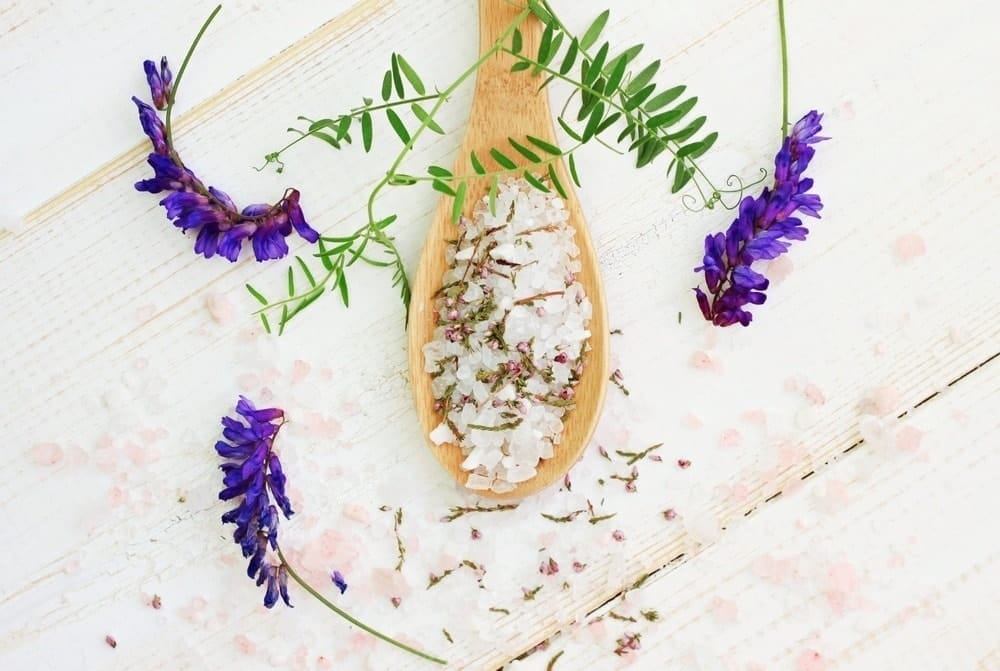
Epsom salts are rich in both magnesium and sulfate, and recent scientific evidence has shown that Epsom salts get quickly absorbed during a bath, soaking in through the skin and into the bloodstream. In one study, ten men and nine women ages 24 to 64 soaked in very hot Epsom salt baths, with temperatures ranging between 122°F to 131°F for 12 minutes each time, for seven consecutive days. Blood and urine samples proved that the magnesium had been absorbed.
Helps MMA And UFC Fighters Cut Weight Safely
Epsom salts prevent bloating due to excessive water retention. That recommends it as a treatment of importance for any UFC or MMA fighters trying to safely cut weight.
Epsom Salts Provide Magnesium Essential For Athletes
This is because magnesium can be absorbed by the skin. We know that magnesium is a very important mineral for athletes, and one that we're often deficient in. Among other things, it helps with muscle relaxation and testosterone production.
Our magnesium levels have dropped to half in the past century because of chemical farming methods, poor nutrition, and lifestyle changes. The body’s ability to absorb magnesium and sulfate from a bath prepared with Epsom salts is an easy fix and excellent news.
According to studies, “Sulfates play an important role in the formation of brain tissue, joint proteins and the proteins that line the walls of the digestive tract.” It is clear that bathing in Epsom salts is a safe and easy way to increase sulfate and magnesium levels in the body, which are essential requirements for top physical conditioning.
Epsom Salts Bath Method
This consists of bathing for 10 to 20 minutes in a very warm to very hot bath to which Epsom salts have been added. This is a very simple and effective way to relax muscles and ease tension from the mind while Epsom salts help with detoxification and recovery from minor injuries, aches, joint pain, inflammation, and acute pain. The use of approximately two cups, or 300 to 400 grams of Epsom salts per bath are sufficient, though up to 600 grams of Epsom salt diluted in a normal size bath of hot water can be used effectively.
Generally, in this case, more is better. Using a larger amount of Epsom salt can be helpful, give extra absorption, and is without risk. This technique should used two to three times per week after extremely high intensity workouts since it reduces muscle and joint pains associated with excessive inflammatory response. Pat dry, do not rinse. Epsom salt baths increase perspiration, cleansing the body of toxins and impurities.
Magnesium sulfate improves blood flow to the muscles, and reduces inflammation through increased vasodilatation. Once absorbed by the skin, Epsom salts calm the nervous system, reduce swelling, relax muscles, and exfoliate the skin. Also, a "hot" Epsom salt bath will help induce sleep once the body starts cooling down.
Caution
There are certain physical conditions that make the use of Epsom salts in baths potentially unsafe and therefore contraindicated. Please discontinue use, consult a doctor, and use extreme caution. Do not take an Epsom salt bath if you have high blood pressure, a heart, or kidney condition.
Baking Soda Bath
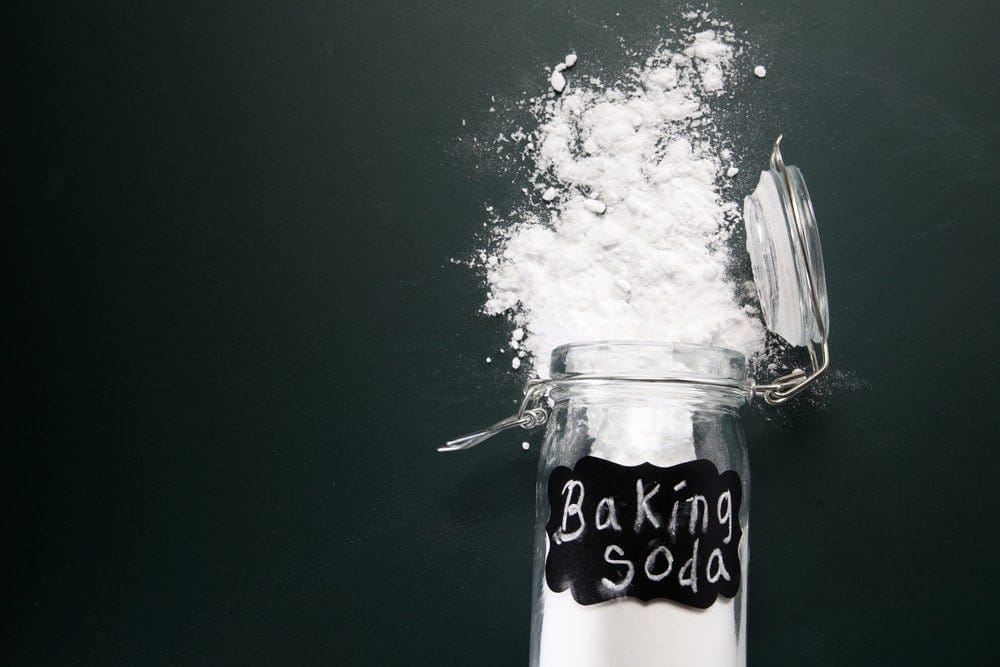
This consists of bathing for 10 to 20 minutes in a very warm to very hot bath to which Epsom salts have been added. This is a very simple and effective way to relax muscles and ease tension from the mind while Epsom salts help with detoxification and recovery from minor injuries, aches, joint pain, inflammation, and acute pain.
The use of approximately two cups, or 300 to 400 grams of Epsom salts per bath are sufficient, though up to 600 grams of Epsom salt diluted in a normal size bath of hot water can be used effectively. Baking soda baths are different than Epsom salt baths, and they treat different conditions.
Baking soda baths are more commonly used for skin concerns while Epsom salt baths treat issues such as circulatory health, blood pressure, and nerve function. Baking soda baths are an inexpensive, safe, effective, and easy recovery method.
Always use non-aluminum baking soda. A baking soda bath is easy to try since most people have a box handy. Some bath recipes call for the combination of equal parts baking soda and salt or Epsom salt.
Ideally, baking soda baths should be very hot. Always drink plenty of water before, during, and after taking a baking soda bath. It is ideal to create a nice atmosphere to help relaxation while soaking.
Dry brushing the skin with a loofah or bath brush before getting into the bath can be helpful for gently removing dead skin along with toxins and impurities.
Baking Soda Bath Method
Add one quarter up to three cups of non-aluminum baking soda for a large tub of lukewarm to hot water. Make sure it is fully dissolved in the water. Soak for 10 minutes up to an hour, adding more hot water, if desired.
Rinse After A Baking Soda Bath
It’s recommended that you rinse with fresh water after a baking soda bath. This helps the body get rid of toxins and residue. Scrub again with a washcloth or loofah to exfoliate and remove dead skin cells if desired. Towel dry, then moisturize heavily, as skin will be very dry.
What It Does
A baking soda bath makes a great detox bath (see detox below), promotes circulation, increases perspiration, and promotes recovery and healing. It also helps with many skin problems experienced by fighters, such as irritated skin, skin rashes from damp or tight garments, itching, burning, swelling, helps urinary tract infections (UTIs), psoriasis, eczema, yeast infection symptoms, chickenpox, poison ivy and poison oak, helps create a positive vaginal pH, kills Candida cells, and helps with diaper rash.
Cold Water, Contrast Water Therapy Debate
Cold water—not ice—and contrast water therapy after intensive training have been proven effective. Most investigations have confirmed that contrast-water therapy and cold-water immersion are effective at reducing the physiological signs and symptoms of intensive training. Cold water immersion and contrast water therapy help recovery from intensive maximum efforts such as martial arts competitions, MMA or UFC fighting events, or other ongoing repetitive intense athletic performances.
Recover the Same Way the Ancient Warriors Used to...
Take a Bath!
Learn Historical Bath Approaches Today!
The practice of immediately applying very cold or contrasting cold/heat helps negate inflammation and tissue damage from intensive training. These results refer to merely ‘cold’ water, not ice-filled. Ice bath research studies gave very mixed results, with some studies showing positive benefits to fighters and athletes, others showing no benefits, or even negative results. A smaller reduction, and faster restoration, of strength and power in athletes was found using contrast water therapy.
Athletes consistently recovered quicker after cool water immersion and contrast water therapy, but fast recovery was less when using either hot water baths or complete rest. However, other studies have shown hot water therapy to be beneficial post-event, which is why self-testing by athletes is essential.
Active recovery was consistently found to be a powerful method. Passive recovery was the only method consistently proven to be non-effective for recovery. Martial artists and other athletes of all levels use water therapy and intensive temperature, whether hot, cold, or contrasting to speed recovery.
Contrast Water Therapy
There are many methods of contrast water therapy, from simple to complicated, using a hot tub alternating with a cold shower, or hot sauna contrasting with a cool bath or shower. One simple method is stand under a cold shower, approximately 50 degrees, for one minute. Then crank up the temp to around 104 degrees F for three minutes. Repeat this four to ten times.
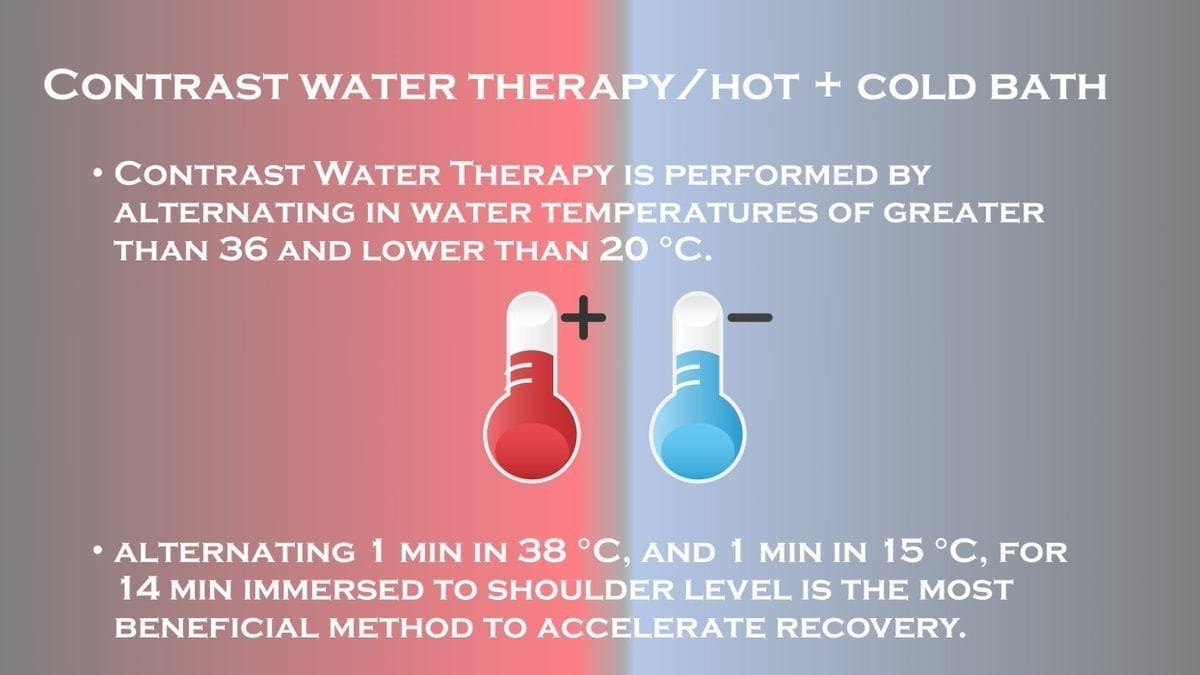
Source: Pro Soccer Science
Finish up with cold. One of the keys here is don't overdo it. 10 to 20 minutes tops should be enough time to reap benefits and avoid risks. Cold contracts muscles, so be sure to completely warm up afterwards. It is theorized that cold therapy can slow down inflammation and combat muscle and joint pain.
The benefits include quicker recovery from intensive training with less resulting soreness and inflammation. Cold refreshes, helps break up and remove lactic acid in the muscles, minimizing soreness and pain, while heat relaxes and releases tightness and trigger points.
Caution
Don't use this cold/heat technique if you're injured as it could increase inflammation. For pain relief and reduction of overuse injuries and inflammation, stick to ice massages only.
Ice Water Therapy

The general theory behind ice water therapy is the cold helps prevent micro-tears in muscle fibers and soreness, and quickens recovery from intensive training or competition events. Combative sports like UFC and MMA are physically intense and often advocate ice water therapy to reduce structural, inflammatory, and physiological stress biomarkers resulting from training or fighting sessions.
Studies of ice water therapy have given mixed results, however. Some research studies show positive benefits. While others indicate a placebo effect with no benefits but no diminishing of fighting strength[13]. Yet other research proves (below) cold water therapy actually diminishes long-term gains in muscle mass and strength.
Studies Show Cold Water Immersion Diminishes Gains
Fighters need to know that several more studies found cold water immersion actually inhibited and diminished long term gains in muscle mass and strength. “It also blunted the activation of key proteins and satellite cells in skeletal muscle up to 2 days after strength exercise…This investigation offers the strongest evidence to date that using cold water immersion on a regular basis may interfere with training adaptations”. However, as previously stated, bodies respond differently, and fighters need to discover their most effective methods for recovery.
Use Ice Locally
It is an excellent idea to ice hands and joints after killer training sessions. Ice reduces swelling, relieves pain, and can feel really great to battered hands, elbows, knees, feet, and neck. Try filling a bowl with ice and water for soaking hands, feet, and elbows. For neck and shoulders soak a hand towel in the icy water, wring out, and lay over sore or overheated areas. Another trick is to fill paper cups with water and freeze. Then apply to jacked knees, wrenched thigh muscles, or whatever hurts, up to four times a day, tearing off paper as needed.
Detox Baths & Essential Oils
The skin is the largest organ in the body, and has the highest absorption capacity. Average skin absorption from bathing is much higher than oral ingestion, with skin on average absorbing over twice as much during a given time interval as is absorbed orally.
Martial Artists Detox Baths?
The practice of detoxification is an ancient idea still in use today because it works. It is a traditional healing concept and still popular method of treatment in Chinese and Ayurvedic medicine. Basically, detoxifying means cleansing and nourishing the body of toxins both inside and outside.
Detox baths are an excellent and simple approach. The skin is the body’s largest organ, and it makes up over 10% of total body mass.
What this means for the martial artist is that soaking in a detox bath can help flush out toxins encountered every day that would otherwise negatively impact the body and ability to compete.
Wudang Kung Fu, BJJ, Krav Maga, Jiu Jitsu, Taekwondo And Many Other Martial Arts Styles Recommend Detoxing Regularly
Toxins affect the mind and body’s ability to function and thrive. That is why most martial arts systems advocate regular detoxing, in all its many forms. A detox bath is one of the easiest, requiring very little except a tub, salt, Epsom salts, salt and soda, and/or essential oils to quickly remove toxins and help the body function better while more easily achieving top performance.
Toxic Overload
When toxins build up in the body, humans get sick. Over 2,100 toxins, including pesticides, herbicides, PCBs, and medications have been found in our water supply, 80,000 tons of carcinogens a year are pumped into the air annually in North America, over 80% of food contains poisonous genetically modified ingredients, most people have residues from over 400 toxic compounds in their body, says the EPA, and this is the short list.
The Detox Bath
Make water as hot as comfortably possible. If water is not filtered, add 1 cup of non-aluminum baking soda to help neutralize the chemicals, particularly chlorine. Add detoxing agents such as 1 to 3 cups of salt or Epsom salts, equal amounts salt and soda, and 6 to 15 drops of essential oils such as DoTerra Deep Blue, Lavender, or Frankincense (see oils below). Immerse the body completely in the water. Close eyes, relax, and do breathing exercises. Soak for at least 20 minutes to an hour.
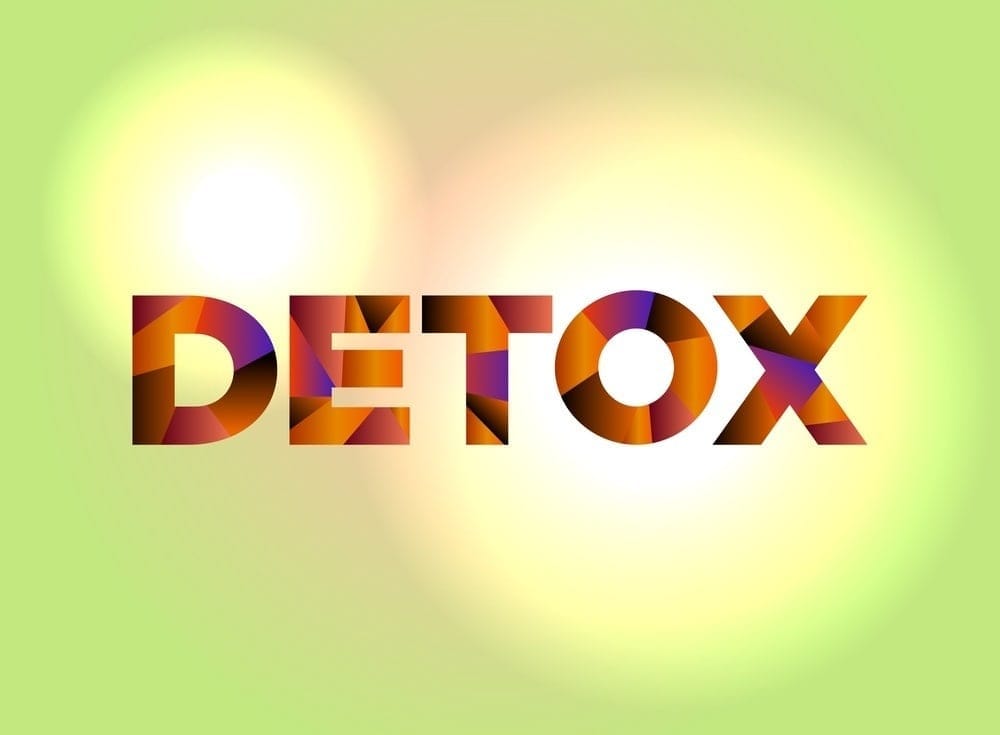
When finished, stand in tub slowly and cautiously in case of dizziness. Shower quickly in cool water to rinse off toxins. Be sure to utilize only non-chemical, nontoxic soap, shampoo, and skin lotion as pores will be open and easily absorb the chemicals found in most commercial products, for instance, Baby Shampoo is highly toxic.
Look up nontoxic body products such as non-fluoride toothpaste, aluminum-free deodorant, petrochemical-free skin lotion, etc.. Do not immediately before or after taking a detox bath. Hydrate with filtered water, rest and rejuvenate.
Training and Essential Oils
Research studies have proven the physical effectiveness of essential oils on pain receptors, reducing inflammation, boosting immune system response, cellular regeneration, and more. Essential oils have been used for thousands of years for healing. They are instantly effective for reducing pain and inflammation, and increasing positive emotional response with no mental alteration. They are instantly absorbed through the skin through direct application or by adding them to baths or releasing in air.

Deep Blue blend, Frankincense, and Lavender are particularly recommended for muscular aches and pain, swelling, and stress. Modern research has proven top quality essential oils have active healing factors. DoTerra Deep Blue essential oil added to the bath and/or used topically has been proven to reduce inflammation, aid in immunomodulation, which means altering the immune response to a desired level, and wound healing.
Deep Blue is soothing after strenuous exercise, reducing pain and inflammation when Deep Blue cream or oil is rubbed onto affected areas. It works for joint pain, trigger points, and swollen knees, feet, muscles, etc.
Research studies have found lavender blocks NMDA receptors which help calm the central nervous system. Lavender’s nerve-calming effects may also be due to its ability to modulate NMDA receptors, and the fact that it has inhibitory effects on serotonin reuptake, promoting positive feelings by keeping more serotonin in the system.
Research on Frankincense essential oil indicated that signaling pathways related to inflammation, wound healing, and immune response were robustly affected in cells exposed to Frankincense essential oil. Frankincense essential oil supports a healthy immune response, promotes overall skin health, and supports a healthy inflammatory response in skin cells.

